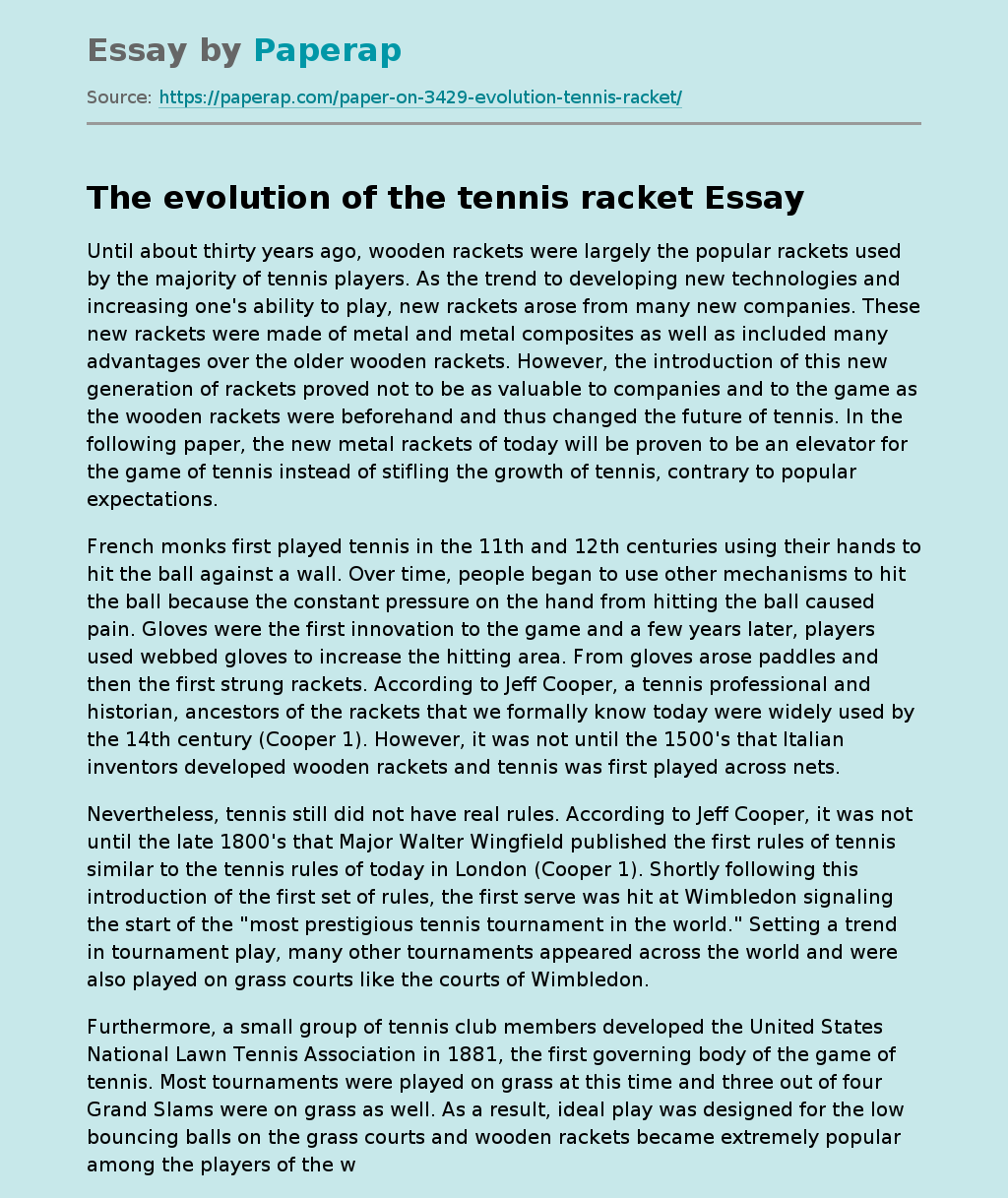Until about thirty years ago, wooden rackets were largely the popular rackets used by the majority of tennis players. As the trend to developing new technologies and increasing one’s ability to play, new rackets arose from many new companies. These new rackets were made of metal and metal composites as well as included many advantages over the older wooden rackets. However, the introduction of this new generation of rackets proved not to be as valuable to companies and to the game as the wooden rackets were beforehand and thus changed the future of tennis.
In the following paper, the new metal rackets of today will be proven to be an elevator for the game of tennis instead of stifling the growth of tennis, contrary to popular expectations.
French monks first played tennis in the 11th and 12th centuries using their hands to hit the ball against a wall. Over time, people began to use other mechanisms to hit the ball because the constant pressure on the hand from hitting the ball caused pain.
Gloves were the first innovation to the game and a few years later, players used webbed gloves to increase the hitting area. From gloves arose paddles and then the first strung rackets. According to Jeff Cooper, a tennis professional and historian, ancestors of the rackets that we formally know today were widely used by the 14th century (Cooper 1). However, it was not until the 1500’s that Italian inventors developed wooden rackets and tennis was first played across nets.
Nevertheless, tennis still did not have real rules. According to Jeff Cooper, it was not until the late 1800’s that Major Walter Wingfield published the first rules of tennis similar to the tennis rules of today in London (Cooper 1). Shortly following this introduction of the first set of rules, the first serve was hit at Wimbledon signaling the start of the “most prestigious tennis tournament in the world.” Setting a trend in tournament play, many other tournaments appeared across the world and were also played on grass courts like the courts of Wimbledon.
Furthermore, a small group of tennis club members developed the United States National Lawn Tennis Association in 1881, the first governing body of the game of tennis. Most tournaments were played on grass at this time and three out of four Grand Slams were on grass as well. As a result, ideal play was designed for the low bouncing balls on the grass courts and wooden rackets became extremely popular among the players of the world.
However, there were no specifications for the types of rackets used. In addition to this, the president of the USTA (which is the current name for the United States Tennis Association that evolved from the USNLTA) stated, “You can play with a tomato can on a broomstick, if you think you can win with it.” (Tenner 1) Another example of the causality of tennis racket limitations is found in the “American Lawn Tennis” magazine:
The appearance in an English tournament of a player using a racket in each hand occasioned surprise recently. Upon investigation, it was found that there is no rule forbidding such action. Some people think this strange. It is nothing of the kind. A player can use as many rackets, and as many kinds, as he desires; just as he may play with a racket in either his right or left hand, or with both. He does not even have to use a racket, as the term is generally understood. He can use anything that by any stretch of the imagination can be described as a racket. Indeed, there have been cases where, as a special stunt, instead of a racket a barrel stave was used, and even a soda bottle.
The laws, properly enough, are not concerned with the kind of racket used; it can be of any size or shape. Summed up, a player can use to hit the ball any implement that can be regarded as complying with the term racket. About the only thing that cannot legally be used to hit the ball is a player’s hand or arm. (USLTA 72).
The evolution of the tennis racket. (2017, Aug 16). Retrieved from https://paperap.com/paper-on-3429-evolution-tennis-racket/

